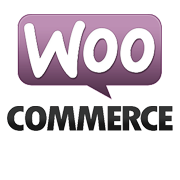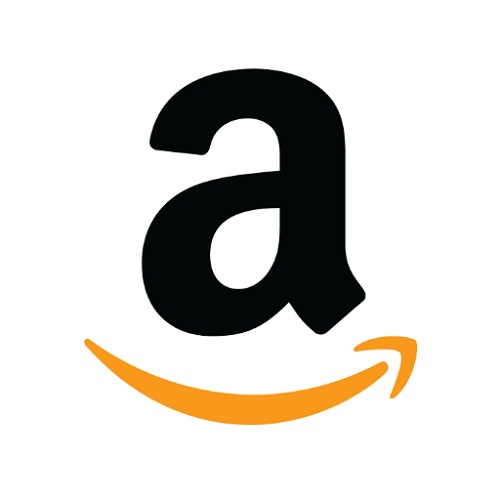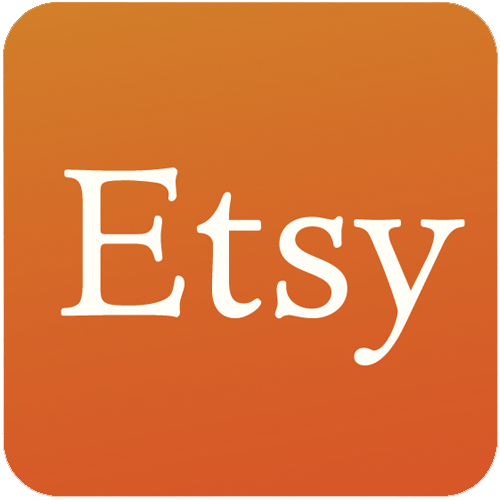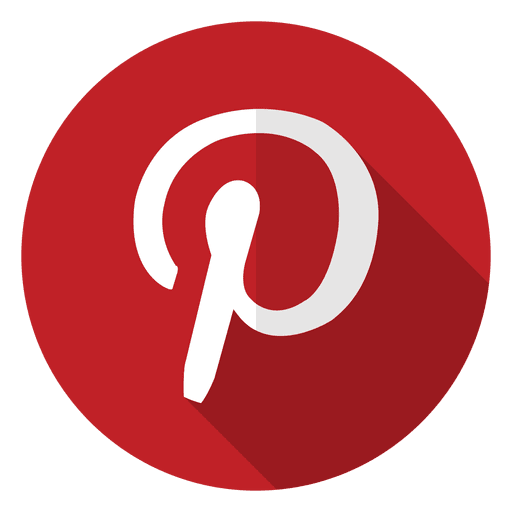Inventing A Keychain Tool And Growing to $42K/Month
Hello! Who are you and what are you working on?
Hi guys. I’m Mike Scully, founder of Lever Gear. We design “everyday carry” tools and accessories that are easy to carry and help people get things done.
Our first product, the Toolcard Pro, is a credit card sized multi tool with 40 tools including an optional snap-on money clip. It slips easily into your wallet or it can be your wallet.
We launched the Toolcard Pro on Kickstarter in Spring of 2016 raising just over $100k through crowdfunding.
Since then, we’ve sold over 25,000 toolcards in over 80 countries. We just launched our next products, the BitVault and BitLight, which are currently on Indiegogo. We hope to begin selling the BitVault in November and the BitLight soon after.
What's your backstory and how did you come up with the idea?
Before founding Lever Gear, I was a product design and development consultant based in San Francisco. Basically, I would help companies with the industrial design and mechanical engineering of their products from idea to production.
As an independent consultant, I was able to work with a wide range of clients from startups, to larger design consultancies, to large OEM companies. I got to see first hand how different companies went through the process of developing products and bringing them to market.
Working for other companies gave me the opportunity and resources to work on some cool projects, but I always had a desire to design my own products. I was continually trying to invent, design and develop ideas that I could build a brand and a business around. But I also wanted to be selective about the product I chose because I knew it would be something I would need to stay committed to for years.
After a few false starts, I finally decided on the Toolcard as the product to launch my business. It ticked all the boxes I was looking for in a first product, which were:
- Few parts
- Easy to warehouse and ship
- Low tech
- The right price point
- Opportunity for innovation and design, and
- In a market niche that I was excited about
The Toolcard Pro came out of a brainstorming exercise I did several years ago. I asked myself what could products could I design that are the size of a credit card. Many of those ideas were tools that made it into the Toolcard.
I didn’t act on the idea until a few years later when I came across a similar product in a gift store. It was a neat product and there were others like it, but I felt I could add a lot of value with better design and engineering.
Describe the process of designing, prototyping, and manufacturing the product.
Collecting ideas
I’m constantly collecting and dreaming up ideas for products and ways to solve problems I have in my life or I see other people experiencing. I spent a lot of time in the EDC (Everyday Carry) space looking at other products which often trigger a new idea.
When I get an idea, I stop what I’m doing and sketch it out and write down the main thoughts on a piece of white copy paper. It may just be a simple sketch of a specific idea or it may turn into a several hour session where ideas feed new ideas and I get into a creative flow.
I don’t break that flow until new ideas stop forming. I throw all those pages into a folder for a later date when I’m ready to evaluate ideas for our next product.
The design process
When I’m designing a product, the process is more formalized.
I begin by defining the problem we’re trying to solve. This is the step many companies get wrong because they either don’t have a clear definition or they start with too narrow of a scope.
As a general rule, I start with the problem, not the product. Then I write down all of the general features we want in the product. Things like: small enough to fit on a keychain, lightweight, must be able to accommodate different bit sizes, etc.
These features inform my design process as I sketch out ideas for how the product might function and look. The ideation (idea generation) phase starts out very broad where the design team tries to identify every conceivable way of solving the problem. Then the ideas are evaluated and narrowed down.
The best ideas are expanded upon and narrowed down in successive rounds until we get 1-3 ideas we want to fully develop.
Prototyping
Prototyping plays a big role throughout the process.
Early on, I do quick mockups to get a feel for the size and shape of a design or test some of the mechanical ideas. The prototypes tend to get closer to reality as the product evolves until we have a final appearance model and/or working prototype which we can use for our Kickstarter and pre-order campaigns.
I recently wrote a blog post about the importance of prototyping and types of prototypes if you want to read more.
Vendors
Finding the right vendors for our first product was a bit of a challenge.
I wanted to find a local or regional vendor who I could work closely with to finalize the design details. There were some features on the Toolcard Pro that were tricky to make and I needed feedback from the vendor as to the best way to manufacture the part.
As an independent inventor, it was difficult getting vendors to take me seriously, even though I had been working with manufacturers for years. The vendors who did return my calls didn’t want to quote it because they thought the parts would be challenging to make.
Eventually, I had to take our prototypes to the manufacturer to prove it could be stamped, machined and heat treated reliably.
We decided to do the laser etching for the Toolcard ourselves, which gives us the flexibility to tweak the design and the ability to customize cards with personal messages, logos, etc. Personalization has been a good source of additional revenue for us.
Our next products have many different types of parts. I tried coordinating vendors in the U.S., but in the end it was much more efficient to use a contract manufacturer with U.S. based management with factories in Asia. They will be manufacturing the completed product which allows us to keep our team lean.
Describe the process of launching the business.
We bootstrapped this business from the beginning with the help of crowdfunding.
For the first year, I continued working a consultant while I developed the Toolcard and used my income and savings to pay for prototypes. We worked out of our garage and leased the laser etcher to begin production. Our Kickstarter and Indiegogo campaigns helped pay for our startup costs as well as tooling and part costs for our first production run.
Our original marketing and branding was on Facebook and social media leading up to our Kickstarter campaign. We had a pretty good idea for what we wanted our website to look like, but we engaged a local graphic design firm to finalize the design and develop our Wordpress site.
We hired a part time employee to help with our fulfillment and website integration and we hired an experienced bookkeeper contractor to make sure we were doing things by the books (err, sorry.)
We fulfilled our crowdfunding orders in the Summer and launched our website in the fall. We also got on Amazon Launchpad to take orders for the holidays.
We continued marketing on social media and got a big Christmas boost by having a large blogger put our product on her 2016 gift guide, which helped us turn a small profit in year one. A lot of things fell into place for us which made it seem a lot easier than it actually is to build a brand. A lesson we would learn in years two and three.
Our takeaways from Kickstarter:
- Do lots of marketing before your campaign and get everyone you know emotionally invested in your venture.
- Don’t promise a definitive timeline for delivery unless you’re certain- we said our products would all ship by Father’s Day and couldn’t meet that deadline for all orders and had to spend a lot of time and money to make it right.
- “Embrace the Chaos”. With a one year old and a basement full of inventory this became our mantra. Enjoy the ups and downs.
Since launch, what has worked to attract and retain customers?
After our successful first year it has been more challenging to attract and retain customers.
Social media and online advertising has become more competitive and after the first year products become stale to content creators and influencers. We have been able to increase sales by about 50% per year but it hasn’t kept up with our expenses.
Our biggest challenges have stemmed from being a one SKU brand. While our product has been well received by the market, having only one product that isn’t a disposable has constrained our growth and profitability in several key ways.
Traditional retailers prefer to deal with multi-SKU brands.
Customers buy our product once and in some cases return for gifts.
We haven’t captured economies of scale for our fixed costs and branding efforts.
Most importantly, customers on our website can only buy one product which limits our conversion rate and cart value compared to online stores with hundreds of products. This in turn has made it difficult to meet ROI targets for online ads, even for professional agencies.
Despite these challenges, we have had success in a few areas:
Kickstarter
Kickstarter will continue to play a key role in how we launch new products as we can directly target our existing customers who want something new.
We recently discovered some crowdfunding sites in other countries and languages like Machi-ya in Japan which expose us to a new audience.
Flash sales
We’ve had some success with flash sale websites for quick cash flow and they can be a good way to reach foreign markets but the margins are terrible and we will be scaling back on those. We’ve done Touch of Modern in the U.S. and QoQa in Europe among others.
Capitalize on holiday season
During the holiday season, we are able to attain a positive ROI in many ad channels. Pinterest has been a good channel for us as a one SKU brand because it let’s us advertise the specific product and people who like it “Pin” it for later purchase and the pins live forever and spread unlike traditional ads which disappear after they are viewed.
Influencers
Influencers, particularly on Youtube brought us a lot of sales in the months after product launch and we hope to expand on that as we launch new products. Many of them just repurposed our Kickstarter video on their own, while for others we sent them samples of our products for review like this one.
Often, influencers will approach us and offer to post videos, social media posts or blog posts for a fee around $200 but we’ve tried it a few times and it hasn’t paid off. Now we offer a percentage of sales we get from them so if their reviews work, we both win.
Online specialty stores
Online retail stores like The Grommet add to the trickle of sales and add up. Since we can't advertise cost effectively (yet) we let them do it for us.
Etsy & Amazon
Finally, online sales platforms,like Etsy and particularly Amazon, are a big chunk of our sales. We are able to hit our target ROIs (Amazon uses the reciprocal ACoS- Advertising Cost of Sales) with sponsored product ads which creates more conversions and boosts our listings on their algorithm.
I’d recommend watching some videos on how to manage your ad keywords and bids so you don’t waste a bunch of money learning on the fly. Be sure to optimize your listings with great images and compelling copy first and also get a base of reviews for each listing.
I feel like everyone needs to be on Amazon but it’s important to keep a tight leash on who can sell your products. We don’t allow any third parties sell on Amazon. We’re in the process of expanding to Amazon Europe which we expect to be a significant boost to our sales.
How are you doing today and what does the future look like?
After a profitable year one, we’ve had to invest about $400k into the business over the past year and a half for capital expenses, moving our business and hiring new employees, R&D for our new products, and a mostly unsuccessful online advertising and various marketing experiments.
The good news is we learned a lot about our business and have implemented some new strategies that put us in position to be profitable for H2 of 2018 and for the full year in 2019.
In short, we have dramatically reduced our ad spend for direct sales and instead have focussed on getting in more online stores and sales channels. We still get some organic sales on our website, but more of our revenue comes from other websites that sell our product for us. We have also (finally) finished our retail packaging and will begin selling to brick and mortar retailers to add to the growing trickle of sales.
We have also worked to address our single SKU problem in two ways. First, we’re adding our aforementioned new Lever Gear brand products. Second, we have decided to add some carefully curated products from other EDC companies to our website store that align with our mission of empowering people to get stuff done by delivering well designed, easy to carry products.
Whether we do that on levergear.com or a separately branded store is TBD but our goal is to increase conversion rates and cart value so we can scale through profitable online ads.
Through starting the business, have you learned anything particularly helpful or advantageous?
Minimize your mistakes by learning
Mistakes are inevitable and usually painfully obvious in hindsight. You can minimize your mistakes by continually reading and listening to interviews and especially by talking things through with mentors or people who have been through it.
Some mistakes you just have to experience yourself. The trick is to fail small, constantly reevaluate your assumptions, own up to and learn from your mistakes.
Cash flow
As a new business, cash flow is the biggest challenge. Getting loans for a startup is difficult and time consuming.
There is a never ending list of things you can spend money on and learning how to sell your product cost effectively takes effort, iteration and determination. When I started a business my attitude was “If you design it (well) they will come.”
If I were to start over I would put a much bigger emphasis on selling the product to every channel, store, customer who would listen. You have to bring cash in the door before you can spend money to grow your business.
Launching new products
Along those lines, I definitely stretched in launching our more complicated second and third products together. The development costs, tooling and inventory costs were way beyond what our cash flow could cover.
In hindsight, I would have focused our efforts on expanding our sales channels sooner, then adding other companies’ products to our website which requires no development or tooling costs and we purchase inventory as needed.
Then I would have launched the simpler of the two products first. Once we get our cash flow and profits on more stable footing we will be able to be more aggressive about launching products.
What platform/tools do you use for your business?
We use Wordpress and WooCommerce for our website, store, CRM, etc. Shipstation for fulfillment. Quickbooks online for inventory and bookkeeping. Mailchimp. We’ve tried a few options for productivity and project management but we always seem to come back to google G-Suite.
What have been the most influential books, podcasts, or other resources?
We just had the team read Start With Why. I think it help us hone our mission and brand vision and get everyone on the same page. I tend to read online articles on specific business or e-commerce topics. The Self-Made Man Podcast has some good interviews with business founders.
Advice for other entrepreneurs who want to get started or are just starting out?
Do an honest assessment of your abilities and personality. You need to have a burning desire to start a business and the grit to see it through. Assuming it’s for you, go for it. The experience is so worth it. Even if you fail the lessons learned will be invaluable. Just don’t overextend yourself in a way that will ruin your life.
That being said, put yourself in a position to succeed before taking the plunge. Keep your day job and work on the business in your spare time. You’ll need to get used to working longer hours anyway. Educate yourself. Test the market.
If you’re funding it yourself, save 2-3x more money than you think you need to start the business and then have some ways to get more funding lined up for when you need it. If you plan to finance with debt, make sure your personal finances are in order particularly your global debt (including mortgage) to income ratio. Start small and simple in relation to your funding.
Test ideas at small scale and constantly re-evaluate and be willing to cut bait on a failing strategy.
Are you looking to hire for certain positions right now?
We’re not currently hiring but we’re always looking for exceptional people if you love what we do and want to join our team. If you’re into EDC and love direct sales and your dream sales job is “eat what you kill” then email us at info@levergear.com.
Where can we go to learn more?
Our website is levergear.com
If you want to follow the evolution of our company check out our FB page.
Follow us on Instagram.

Download the report and join our email newsletter packed with business ideas and money-making opportunities, backed by real-life case studies.

Download the report and join our email newsletter packed with business ideas and money-making opportunities, backed by real-life case studies.

Download the report and join our email newsletter packed with business ideas and money-making opportunities, backed by real-life case studies.

Download the report and join our email newsletter packed with business ideas and money-making opportunities, backed by real-life case studies.

Download the report and join our email newsletter packed with business ideas and money-making opportunities, backed by real-life case studies.

Download the report and join our email newsletter packed with business ideas and money-making opportunities, backed by real-life case studies.

Download the report and join our email newsletter packed with business ideas and money-making opportunities, backed by real-life case studies.

Download the report and join our email newsletter packed with business ideas and money-making opportunities, backed by real-life case studies.























